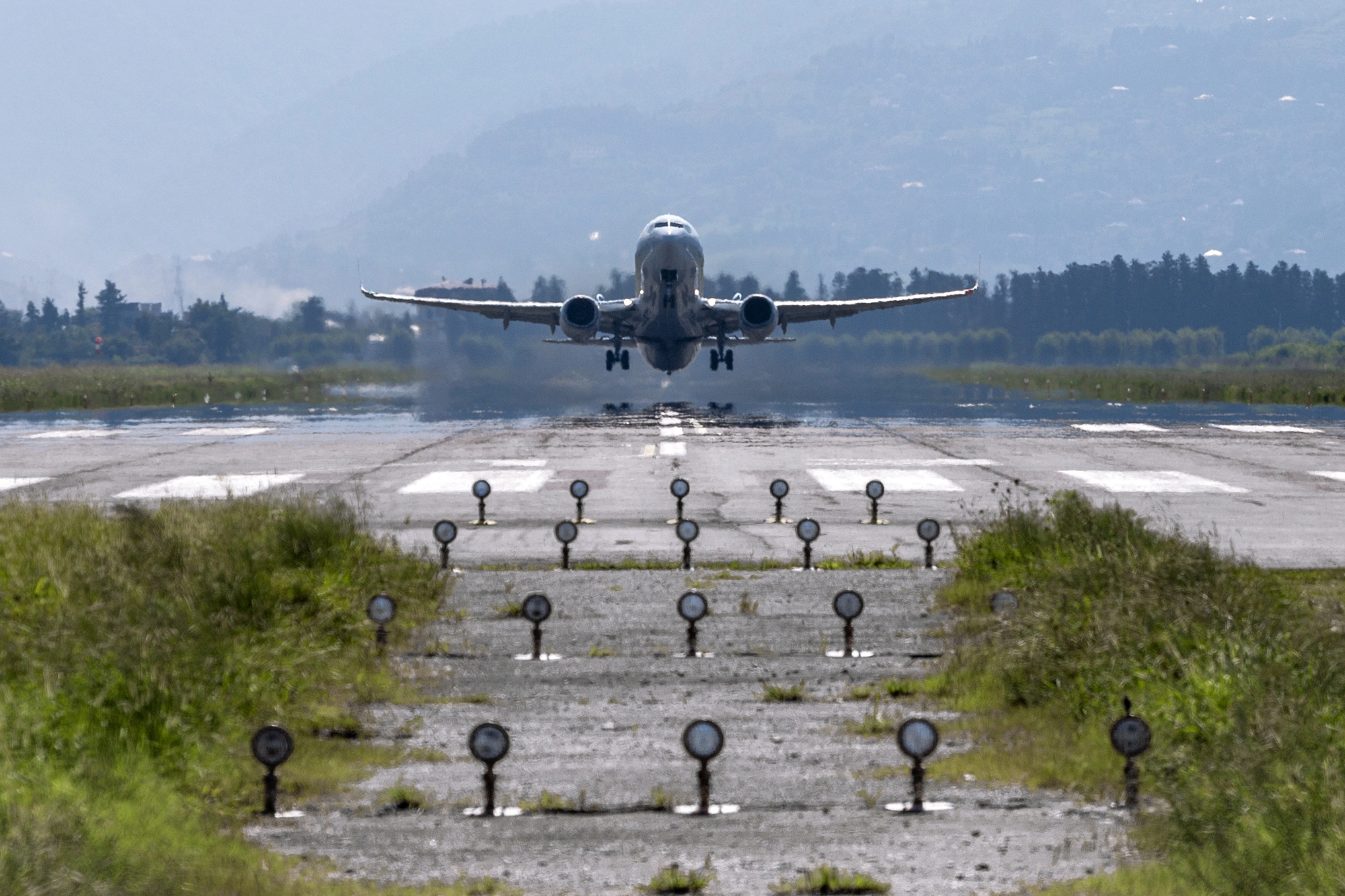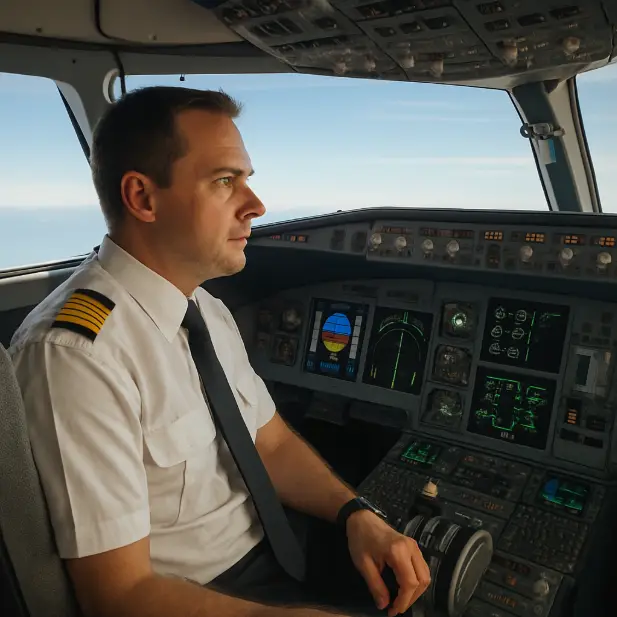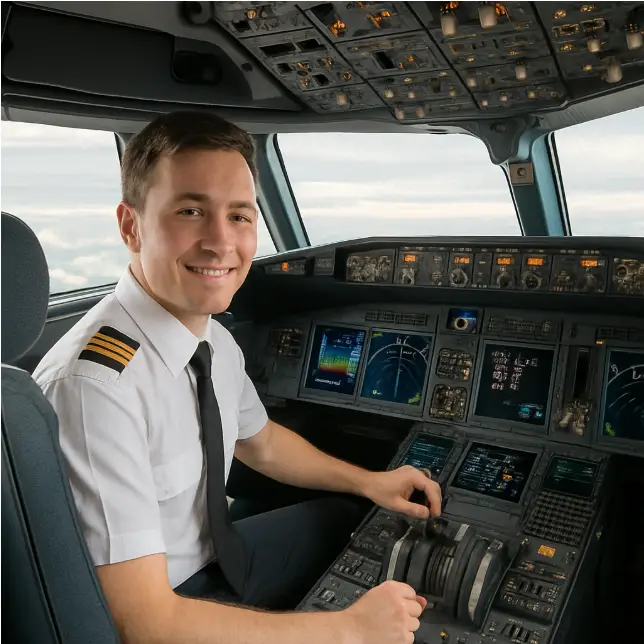The Path to Captain What It Takes to Climb the Airline Hierarchy

- aviatorpro_6714
Navigating the skies as a commercial pilot is a dream for many, but getting to the prestigious position of Captain takes dedication, skill, and a clear understanding of the airline hierarchy. This journey isn’t just about flying hours; it’s about understanding the various airline positions, the responsibilities each role entails, and the steps necessary to ascend the ranks.
In this article, we will explore the path to becoming a Captain, the various positions within an airline, and what it takes to climb the airline hierarchy.
Understanding the Airline Hierarchy
The airline industry is structured like a ladder, where each rung represents a different position with its own set of responsibilities and qualifications. Understanding this structure is crucial for any aspiring pilot who wishes to navigate their career path effectively.
Entry-Level: First Officer
The journey typically begins as a First Officer, also known as a co-pilot. In this role, you assist the Captain in operating the aircraft. The First Officer plays a crucial role in ensuring the safety and efficiency of flights. To become a First Officer, one must typically have a commercial pilot license, which requires a certain number of flying hours, along with specific training and certifications.
First Officers are expected to handle a wide range of tasks, from pre-flight checks to in-flight navigation and communication with air traffic control. This position is a learning ground, preparing pilots for more advanced roles.
Mid-Level: Senior First Officer
Once you have gained experience and have accumulated additional flying hours, you may be promoted to a Senior First Officer. This role comes with greater responsibilities and the opportunity to take on more leadership tasks. Senior First Officers often act as mentors to newer pilots and may have the chance to take command of the aircraft under the supervision of the Captain.
The Pinnacle: Captain
Achieving the rank of Captain is the ultimate goal for many pilots. As a Captain, you have the final authority over the aircraft and its passengers. This role requires not only extensive flying experience but also strong leadership and decision-making skills. Captains are responsible for the safety of everyone on board and must be able to handle any situation that arises during a flight.
To become a Captain, pilots must fulfill specific requirements set by their airline, which generally includes a significant number of flying hours, successful completion of rigorous training programs, and passing various assessments.
Climbing the Airline Ranks
Climbing the airline hierarchy is not just about logging flying hours; it requires strategic career planning, continuous learning, and dedication.
Building Experience
Experience is key in the aviation industry. Pilots must accumulate a significant number of flying hours to advance to higher positions. This experience is gained through various roles and responsibilities, starting as a First Officer and progressing through the ranks.
Continuous Learning and Training
The aviation industry is constantly evolving, with new technologies and regulations emerging regularly. Pilots must stay updated with these changes through continuous learning and training. This includes attending workshops, completing refresher courses, and undergoing simulator training to ensure they are equipped with the latest skills and knowledge.
Demonstrating Leadership
Leadership is a critical component for those aspiring to become Captains. Pilots must demonstrate their ability to lead and make decisions under pressure. This involves effective communication, teamwork, and the ability to remain calm in challenging situations.
Challenges on the Path to Captain
The path to becoming a Captain is not without its challenges. Pilots must navigate various obstacles, including:
- High Competition: The aviation industry is competitive, with many pilots vying for limited positions. Standing out requires not only skill but also dedication and professionalism.
- Regulatory Requirements: Pilots must adhere to strict regulatory requirements, including medical examinations, certifications, and regular assessments.
- Work-Life Balance: The demanding nature of the job can impact work-life balance, with pilots often spending extended periods away from home.
Conclusion
Becoming a Captain is a rewarding yet challenging journey that requires dedication, skill, and perseverance. Understanding the airline hierarchy and the various positions within it is crucial for any aspiring pilot. By building experience, continuously learning, and demonstrating leadership, pilots can navigate the path to Captain and achieve their career goals in the aviation industry.
Whether you’re just starting out or are already on your way, remember that every flight hour and every experience contributes to your growth and development as a pilot. Stay focused, keep learning, and aim high as you climb the airline hierarchy.



